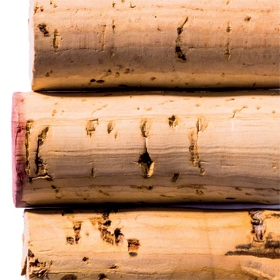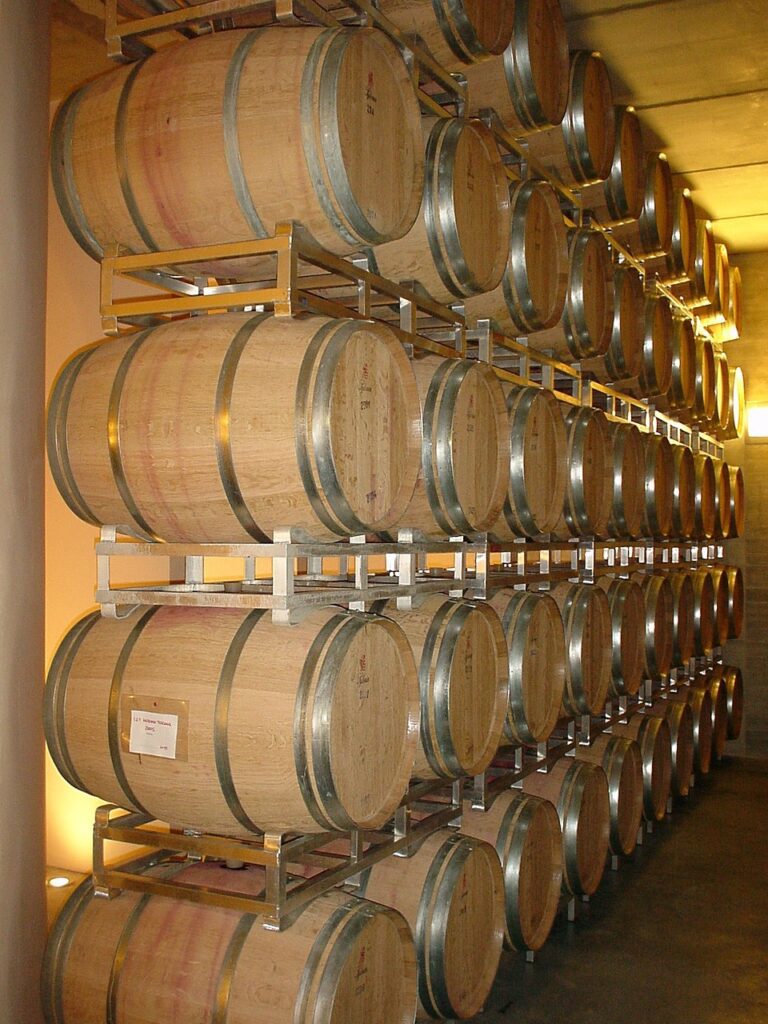VINEYARD AND CELLAR UPDATE
Winemakers are dedicated to make the best wines by using suitable quality grapes and applying the best winemaking practices with suitable cellar equipment. The entire process in the cellar is usually under their control and they must also bear the responsibility for it. The packaging of the wine is however often another person’s or institution’s responsibility and the dedication of several years can be destroyed instantly. Irrespective of the responsibility for the packaging the combination of the wine, container and the closure of the container must be executed optimally to ensure that the wine reaches the consumer in the best condition. The choice of the bottle closure is only one of the decisive factors.
The problems with natural cork are mainly contributed to the development of alternative bottle closures. In order to evaluate and compare different bottle closures, the properties of the most suitable closure must be clear. It must close bottles effectively, in spite of the variation of bottle necks. The removal of the closure must be easy and the romantics of the process must be retained. In order to facilitate the optimal wine maturation in bottles, sufficient air (oxygen) must migrate into the bottle. If sufficient oxygen does not migrate, the so-called reductive flavours can develop in the wine and excessive air can lead to the oxidation of the wine. Bottle closures must also not impart foreign flavours like mouldiness or synthetic flavours to the wine and be aesthetically acceptable to consumers.
Technical cork closures like Diam use natural cork as material, but by using the Diamant technology it is ensured that the closures are free of TCA and other off-flavours. It has individual uniformity and different products in the range have different OTR specifications (Oxygen transmission rate), which makes it suitable for different products.
Synthetic corks are made from plastic compounds to resemble natural cork stoppers, but without causing the TCA contamination of wines. Some of the closures do however, have excessive air permeability and are sometimes difficult to remove from bottles.
Nomacorc can be described as a synthetic bottle closure. It is manufactured by using a two-stage co-extrusion process. The raw materials are mixed and according to specifications, two separate blends are combined to form two parts of each closure. A foam core with uniform cell size and density is extruded and a flexible elastomeric outer layer is thermally bound around the foam core to ensure a tight leak-proof closure. The contact between the outer layer of the closure with the inside of the bottle neck prevents any oxygen migration between the two, but the inside of the closure, consisting of the foam core provides a consistent, predictable oxygen permeation to the inside of the bottle. Nomacorc offers different products with different oxygen transmission rates (OTR) which can, depending on the requirements, be used for different wines. The different Nomacorc closures differ regarding their oxygen permeability over different periods after bottling.
Stelvin is the most widely known screw cap and is made from aluminium, which threads onto the bottle neck. It forms a tight seal and less air migrates into the bottle than natural cork stoppers. It is supplied with two different liners which differ in terms of their oxygen permeability. The Saran tin liner has a high barrier level, allowing less oxygen migration into the bottle, while the Saranex liner allows more oxygen to pass through. The Saran liner is consequently recommended for white wines or wines with a maturation potential of more than five years and the Saranex liner is recommended for red wines or wines to be consumed within two to three years.
The general quality and maturation potential of wine is consequently maintained. A possible disadvantage of screw closures is however the potential incidence of reductive flavours like sulphur compounds (rotten egg) which can especially occur in Sauvignon blanc and the belief of some consumers that screw closures are only used for cheap wines. The use of screw closures in bottled wines increased considerably over the last decade. In the United Kingdom it is already accepted by 85% of regular consumers, while 70% of the USA wine consumers also accept it.
VinPerfect bottle closures were developed resulting from the assumption that wine should not start oxidising within five years after bottling. OTR experiments with present screw caps indicated that the closures with a tin liner or Saranex liner will take respectively 150 and 80 years to allow the migration of 5 ppm oxygen. This can consequently cause reductive flavours. The VinPerfect closure uses a 30 x 60 Stelvin screw cap with the top of the cap having microscopic holes to allow a consistent oxygen access to the inside of the bottle. The liner of the closure is a multi-layer laminate which allows a predictable, consistent OTR. The liner has two PET films with a partial aluminium coating. A two millimetre high density polyethylene foam on it provides elasticity to seal the bottle. The measure of the aluminium coating of the closure determines the OTR of the closure.
Many factors determine the decision about which bottle closure should be used for a specific wine. A variation of screw closures or other closures are available and it is important to determine how the different closures will influence the oxygen control after bottling.
Vinolok (also known as Vinoseal) is a glass closure with an inert O-ring, which seals the bottle hermetically to prevent oxidation and no TCA-contamination can occur. It is an elegant seal with a good image, but is very expensive and cannot be used for standard bottles and closed by existing bottling equipment.
Zork is an alternative closure for still wines and seals like a screw closure, but pops like a natural cork. It consists of a tamper-evident clamp that locks onto the band of a standard cork mouth bottle, an inner metal foil which provides an oxygen barrier similar to a screw cap, and an inner plunger which creates the ‘pop’ on extraction and reseals after use (Cohen, 2012; Rieger, 2012; Sullivan, 2015).
Traditional cork companies and their countries of origin have spent millions of dollars over recent years to improve the image and quality of their products. The Spanish government for instance banned the use of alternative closures in some of their known wine regions in 2006.
The variety of available bottle closures complicates the choice of winemakers and a perfect closure actually does not exist. The applicable wine and cost of the closures are factors that influence the decision. The chosen closure(s), must be the best for the applicable cellar’s products and requirements, and cellars must sometimes adjust their sulphur dioxide adjustments prior to bottling according to the bottle closure (Sullivan, 2015).
References
Cohen, Remi, 2012. Reducing reduction issues. Vineyard & Winery Management, May/June 2012: 56 – 60.
Rieger, Ted, 2012. New closures offer predictable oxygen transmission rates. Vineyard & Winery Management, May/June 2012: 42 – 47.
Sullivan, Sean, 2015. In search of the perfect closure. Vineyard & Winery Management, May/June 2015: 44 – 48.
Wikipedia.org/wiki/Alternative_wine_closures.














